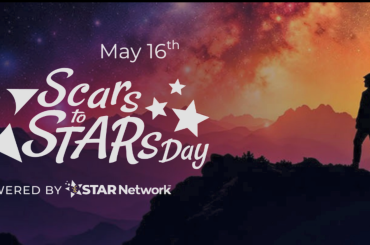It’s no secret that addictions of all types are cyclical in nature, with one stage leading to the next, and then the next, leaving the addict mired in a seemingly endless downwardly spiraling loop. With sex addiction, various versions of the addictive cycle have been proposed. The first of these appeared way back in 1983, when Dr. Patrick Carnes outlined a four-stage model in his groundbreaking book, Out of the Shadows. In the intervening three-plus decades, as clinicians have developed a better understanding of sexual addiction, this model has been modified and expanded. Today we utilize a six-stage cycle to describe this debilitating disorder, outlined below.
- Stage One – Triggers (Shame/Blame/Guilt/Other Strong Emotions): Triggers are catalysts that create a need/desire to act out sexually. Most often triggers are some sort of “pain agent.” Pain agents include emotional/psychological discomfort and also (sometimes) physical discomfort. Essentially, depression, anxiety, loneliness, boredom, stress, shame, anger, and/or any other uncomfortable feeling can trigger a sex addict’s desire to escape, avoid, and dissociate. That said, positive agents can also serve as triggers. So if a sex addict gets fired from his or her job, he or she will want to act out sexually; and if that same addict gets a great new job, he or she will want act out sexually. Furthermore, triggers can be visual (seeing a sexy image on a billboard), auditory (hearing a noise that reminds the addict of sexual activity), olfactory (smelling the perfume of a past sexual partner), or even touch or taste related.
- Stage Two – Fantasy: After being triggered and therefore needing/wanting to escape and numb out, sex addicts automatically turn to their primary coping mechanism – sexual fantasy. They start thinking about how much they’ve enjoyed past sexual encounters and how much they would enjoy a sexual encounter either right now or in the near future. Very quickly, the addict becomes preoccupied to the point of obsession with/or his or her sexual fantasies. Before long, every person encountered by the addict (in person and online) is viewed as a sexual object – and these fantasies do not involve memories of bad experiences or unwanted consequences.
- Stage Three – Ritualization: Ritualization is where fantasy moves toward reality. This stage adds excitement, intensity, and arousal. For example, the addict logs on to the computer and goes to his or her favorite porn site, or hops in the car and drives to a place where sex workers congregate, or begins the process of booking an out-of-town business trip on which he or she can act out sexually without restraint, or whatever. This stage of the cycle is also known as “the bubble” or “the trance” because the addict gets lost in it. Real world issues and concerns disappear as the addict focuses more and more intently on his or her sexual fantasies. This stage of the addiction (rather than actually having sex) provides the escapist high that sex addicts seek. As such, sex addicts typically try to stretch this stage for as long as possible – looking at porn, cruising for sex, chatting via webcam, or whatever for many hours (or even days) before moving to the next stage.
- Stage Four – Acting Out: Most non-sex addicts think that this stage, rather than stage three, is the ultimate goal of sexual addiction because this is where actual sex and orgasm takes place (either solo or with another person or people). However, as stated above, the fantasy-fueled escape and numbness of stage three is the real objective. In fact, most sex addicts try to put off actual sex and orgasm for as long as they possibly can because orgasm ends the escapist high and tosses the addict back into the real world with all of its issues and problems. In other words, sex addicts are looking to escape emotional discomfort, not to experience the pleasure of orgasm. Orgasm actually brings their high to an abrupt, screeching halt.
- Stage Five – Avoidance: After acting out, sex addicts attempt to distance themselves emotionally from what they’ve just done. They justify their behaviors, telling themselves, “If my spouse was nicer to me, I wouldn’t need to do this.” They minimize their behaviors, telling themselves, “Nobody knows that I just spent six hours looking at and masturbating to pornography, and nobody got hurt by what I did, so it’s no big deal.” They rationalize their behaviors, telling themselves, “Hooking up with people online for mutual masturbation isn’t really cheating, because I don’t actually touch the other person and I don’t even give that person my real name.” Etc. In other words, in this stage of the cycle the addict’s denial kicks in full force as a temporary protection from the next stage.
- Stage Six – Despair (Shame/Anxiety/Depression): Eventually, avoidance dissipates and sex addicts must face reality. And when this occurs, they start to feel ashamed and remorseful. Exacerbating these unwanted emotions is the fact that they also feel powerless to stop the cycle of their addiction. Plus, whatever emotional discomfort it was that they were trying to escape in the first place returns. So, as you may have noticed, stage six starts to look a lot like stage one, in which the addict is triggered. Basically, stage six morphs into stage one, spinning the self-perpetuating cycle yet again.
Unfortunately, the sex addiction cycle tends to intensify with each repetition. In other words, sex addicts typically require more of the same behavior or more intense behavior to reach or maintain the same escapist high. This converts the cycle from a repetitive loop into a downward spiral leading to relationship, work, health, financial, legal, and all sorts of other consequences – any of which can serve as a new trigger.
The good news here is that it is possible to stop the sex addiction cycle. The cycle is most easily interrupted in the early portion of stage one, when the addict’s triggers first arise. If and when the addict learns to recognize his or her triggers (emotional discomfort, certain types of imagery, certain areas of town, etc.), he or she can engage in contrary actions designed to:
- Stop the onset of sexual fantasy (and other stages of the cycle)
- Deal with uncomfortable feelings (or other triggers) in an emotionally healthy, non-addictive way
Though it is easiest to halt the cycle in stage one, it is still possible to break the pattern in stage two and even in the early portion of stage three, but doing so becomes progressively more difficult. It’s a bit like a bounder rolling down a hill. The further along it gets, the more momentum it has and the harder it is to stop. Once the addict moves into the bubble/trance portion of the cycle, compulsive sexual behaviors and the consequences that follow are pretty much inevitable.
If you believe you might struggle with sex addiction, I strongly recommend that you seek assistance via therapy with a Certified Sex Addiction Therapist (CSAT) and/or a 12-step sexual recovery group (either in person or through In the Rooms). Twelve-step sexual recovery groups include Sex Addicts Anonymous (SAA), Sex and Love Addicts Anonymous (SLAA), Sexaholics Anonymous (SA), and Sexual Compulsives Anonymous (SCA). Be aware that these groups are, in certain important ways, very different from one another. SLAA tends to have the most women; SCA tends to be the most gay-friendly; SAA tends to be very accepting and inclusive; and SA tends to be “heteronormative” in its approach (meaning its model of sexual sobriety is “no sex outside of a traditional male-female marriage”). Meanwhile, a Certified Sex Addiction Therapist can do an in-depth assessment of your life and your sexual behaviors, properly diagnosing (or not diagnosing) sexual addiction and then guiding you toward a happier, healthier life.








11 Comments
Excellent
This is exactly how my CSAT boiled it down for me. It took me a long time to realize my predicament. I went to rehab and learned more about this betraying form of addiction. With a strong family to support me and online help like this, I can proudly say I’m a grateful recovering sex addict.
Thank you for this excellent article. In my most recent relapse which lasted 8 weeks, there were a number of times when friends in recovery tried to help me to break the cycle but in each case for me, I was going through with the action of matter what – including a cost of $1100. What I also noticed is something that I started to develop strong feelings for an acting out partner (an escort) that had me wanting to spend more time with her even when not acting out-an extension of the fantasy? Also for me often orgasm is not the game for me at all-and many partners don’t understand that – thanks for shedding light on this for me.
Now I feel stdpiu. That’s cleared it up for me
Not the toughie I thought it might have been today, although there were a couple to pause and think about.A little more than 2* for me; thanks to setter, and to pommers for the review.
HIV Antibodies Test – This is a free of charge and confidential blood test for HIV/AIDS during which volunteers with nursing background help take blood samples …
Pingback: Understanding Triggers in Pornography Recovery [for 2019]
Pingback: PORN: The Pernicious Predator
Pingback: Dealing With Porn Addiction • TRΔNSFORMΔSEΔN
Pingback: Understanding Triggers in Pornography Recovery – Kill-Addiction
Pingback: The Cycle of Sex Addiction – Augustine Recovery